Imre Pán & Aurelie Nemours, Correspondences
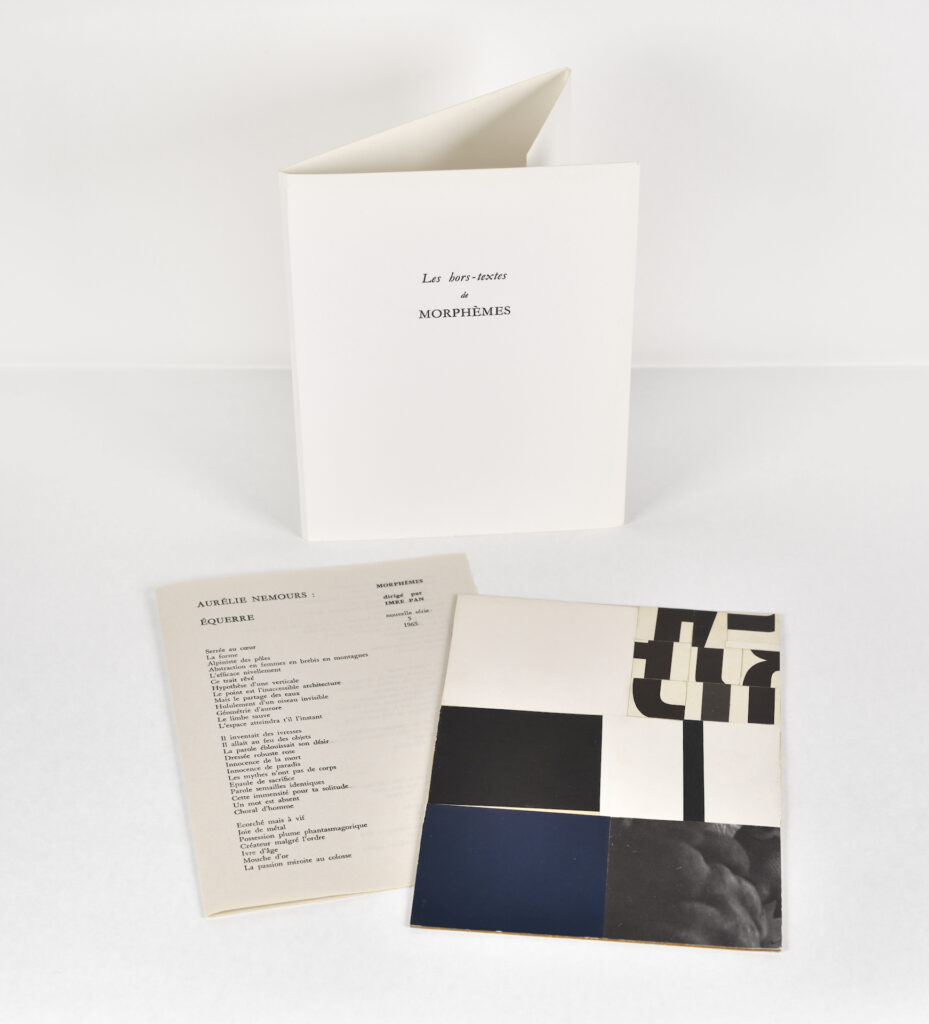
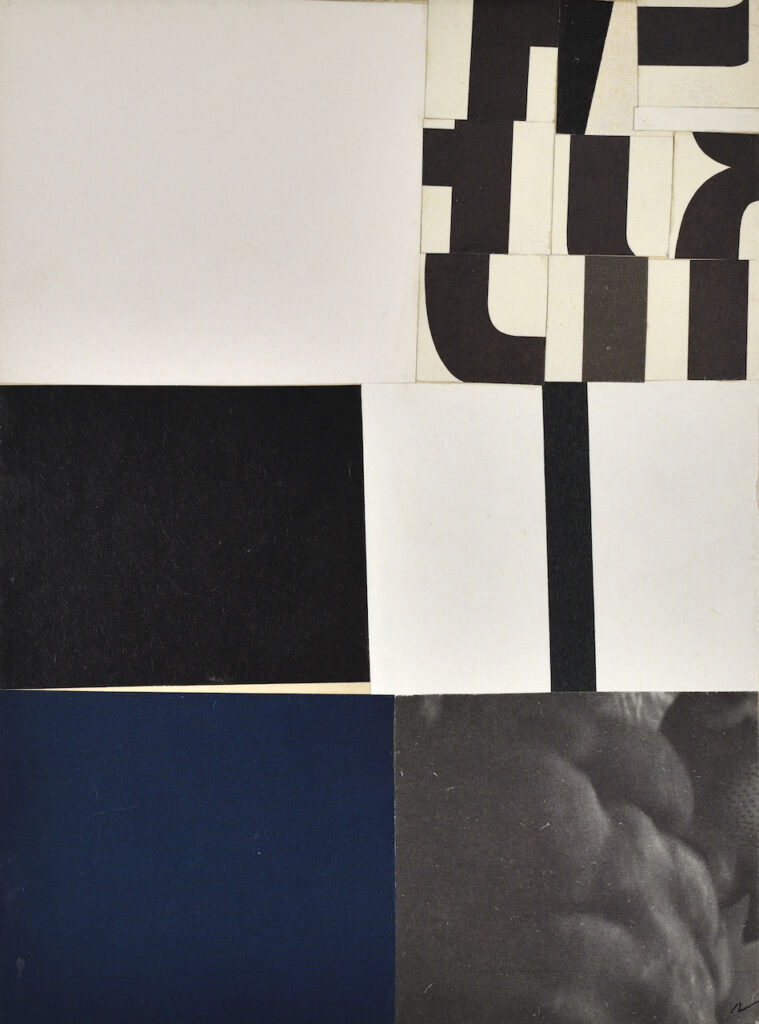
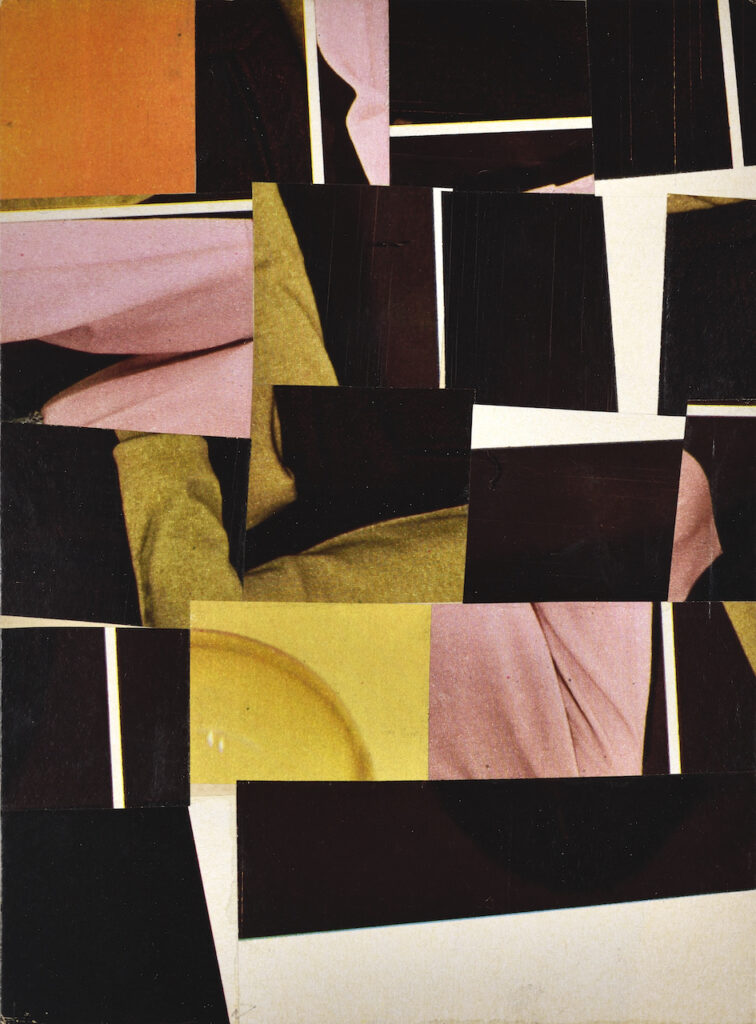
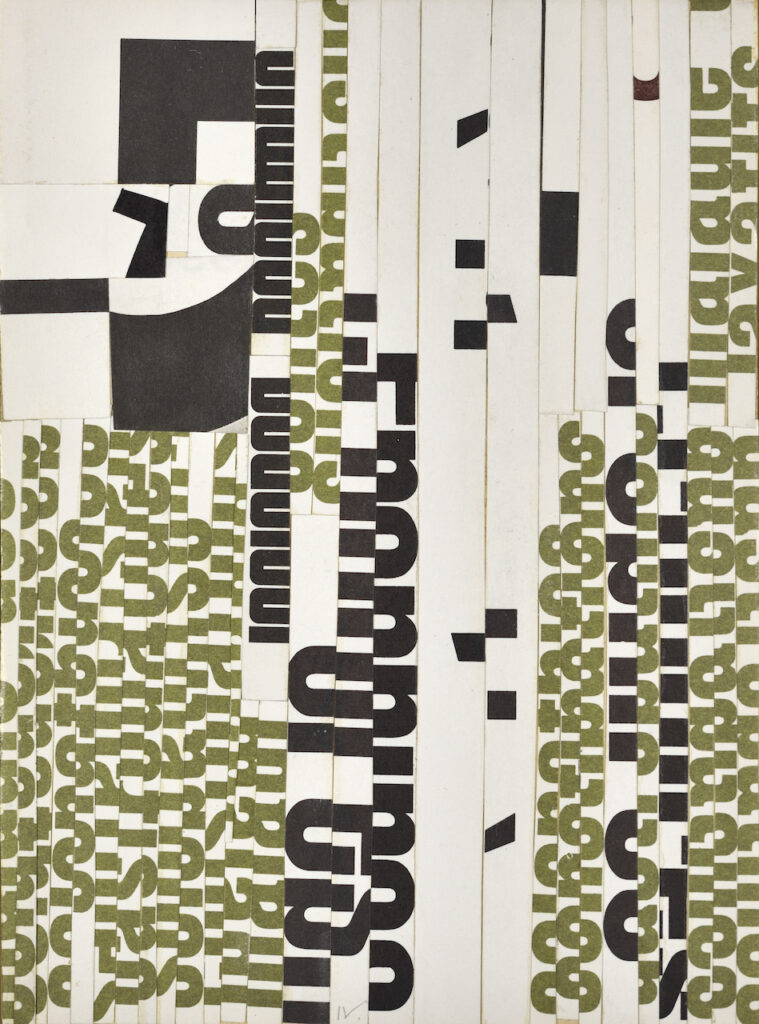
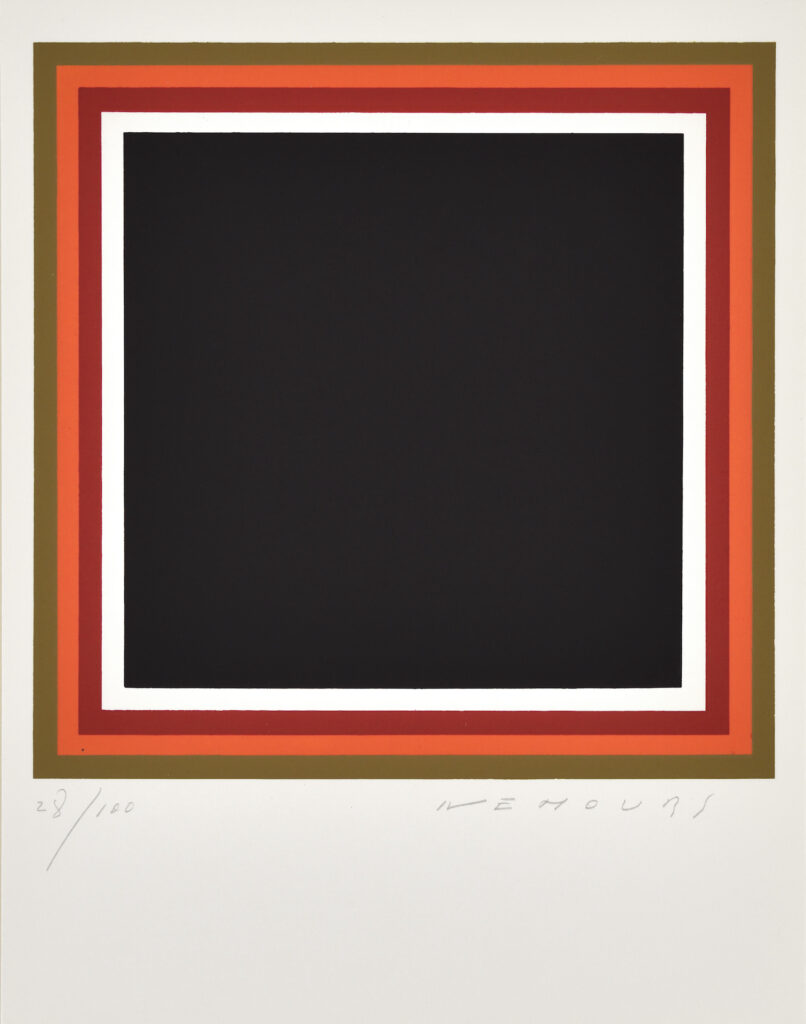
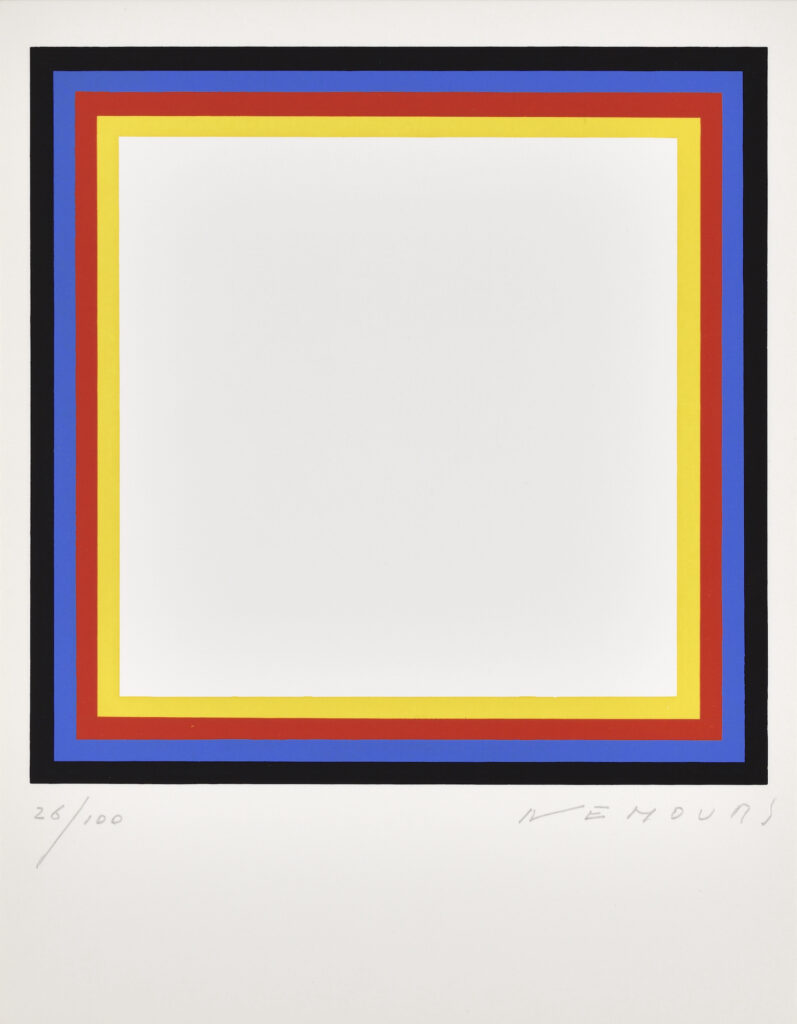
Aurelie Nemours’ collages are a surprise. Visual. Plastic. Poetic. For those who are used to, a little absent-mindedly, to the artist’s geometric works of line – horizontal, vertical – and point, to her black and white as rigorous as they are sensual, to her vibrant flat tints of monochrome colours, to the deep, velvety emptiness of a repeated infinity that she deploys from series to series, her collages from 1965 and 1968, made at the request of Imre Pan for the editions he tirelessly designed, interwoven, rhizomatic, fragmented, and whose titles he constantly repeated (Signe, Signe Morphèmes, Signe L’art du dessin, L’estampe moderne, Morphèmes, Mini-Musée, Préverbes. …), prove, upon discovery, to be sets of a singular unity and, above all, a fruitful step aside for the artist.
When they are revealed from their silk paper where they were scrupulously protected from natural light, from the dust of time, from possible tears or folds, When they were detached from their envelope of soft, matt Arches vellum cardboard paper, which married them to one of the copies of the magazine Morphèmes, more precisely number 5 dated 1965, and to the artist’s poem “Équerre”, it was a dazzling shimmer of broad flat tints or cut strips, a modulation of obliques, an undulation of blue, green, red, yellow, a dance or rather a choreography so little austere of typographical letters playing of the fragment and the hidden, coming from an ordinary magazine paper of the modern and consumer society of the beginning of the Sixties which opened to new artistic avant-gardes not disdaining to rediscover the technique of the collage and the wallpapers. Thus Pop Art. If Aurelie Nemours’ highly original collages are a surprise, or if they are always an astonishment, they were not unknown to the work of the artist of Rythme du millimètre or Structure du silence… at least forgotten works that Serge Lemoine and Marianne Le Pomméré brought back to the forefront of an exhibition and catalogue in 2001, at the Musée de Grenoble, in Aurelie Nemours. Pastels. Gouaches. Collages.
But oblivion still threatens them, twenty years later…
To bring them back, today, in 2023, in the window of the Abraham & Wolff gallery, in a discreet and modest presentation, attentive both to what they are as a unique plastic work and as part of an edition uniting poetry and visual form, an edition that dissolves the arbitrary boundaries between the literary and the visual arts, is to bring back to light one of the richest and most sensitive examples of collaboration between an art critic-poet and an artist-poet. And through this “association”, which takes the form of an editorial publication – the great project or work of Imre Pan in his Parisian years – Aurelie Nemours joins artist friends like Marcelle Cahn, artists – from whom she is undoubtedly more distant – supported and tirelessly exhibited, shown by Imre Pan since his installation in Paris, such as Étienne Hadju, Victor Vasarely, Geneviève Asse, Corneille, Roberto Matta, André Marfaing, Christine Boumeester, René Bertholo, Sonia Delaunay, Jacques Doucet, Arpad Szenes, Ida Karskaya, and, a little later, Lourdes Castro, Milvia Maglione, Colette Brunschwig…
Imre Pan, who, from 1960 onwards, created these small or medium-sized editions, with limited editions, published in the form of a printed booklet composed of a critical text of which he was the author or an artist’s poem, as for Aurelie Nemours, and accompanied by an original work of art (etching, drawing, watercolour, gouache, pastel, collage), is part of the genealogy of this synchretism of the arts of the first avant-gardes of modernity at the beginning of the 20th century. Pan perpetuates it, maintains it, renews it and updates it throughout the 1960s, a decade that invented and questioned other possible uses of materials and new formal languages in which the written word and the letter redraw surfaces, give rhythm to white spaces and typography, and in which experimental artistic groups in Brazil, the United States, France, Italy and Portugal developed visual, concrete and sound poetry. Although Aurelie Nemours’ collages are rooted in the cubist lineage of Kurt Schwitters, for example, they must be seen in the light of new contemporary poetic and musical forms, and of this renewed practice of collage.
Aurelie Nemours and Imre Pan met in 1963. Their collaboration extended throughout the decade. It began with the publication of a poem by the artist in the first issue of the magazine Morphèmes (January-February 1963):
“The grass
The breath
The voluptuous flights
The secret trills
The song
The watermarked star for morning
Of Glory
Unusual the truth of this martyr
In our memory of innocence”.
The second issue of the magazine (March-April 1963) – which is accompanied by an etching by Geneviève Asse – welcomes a new poem by Aurelie Nemours:
“The trace
The lightning
The Instant
The given space of charity
The imponderability
The face”.
In 1965 or 1964, therefore, Imre Pan invited Aurelie Nemours to make a set of twenty collages which were published in the number 5 of Feuillets de Morphèmes or Hors texte de Morphèmes dated 1965. The artist composed a new poem, “Équerre”, a sort of response to these works, which were new to her practice, and some agree that she attached little importance to them. Should we listen to Aurelie Nemours? The unity and singularity of the whole, which was completed in 1968 by the creation of a new series of twenty numbered and signed collages, again at the request of Imre Pan, suggest that there was less indifference on the part of Aurelie Nemours than aesthetic and meditative experimentation.
The 1968 collages were never published in the edition that Imre Pan probably intended. They are also characterised by a visual unity close to the fragmented musical score, the artist exploring more the twists and cuts of the word, of its sign-unit, the letter. It is undoubtedly in the unusualness of these collages, which have remained isolated from their publication, that the echoes of a concrete and sound poetry in the very silence of the gaps in the white, in the sinuous rhythms of unexpected typographic cuts, and inventive of a new plasticity of the word-matter and its detached form, are manifested with the greatest impact.
To look at Aurelie Nemours’ collages is to mobilise the mobile and the meditative, the movement and the energy of space; it is to turn towards the contemporary of the fragment and the cut-out, the caesura and the spread, particularly if one remains attentive to the pieces of 1968. If the question is: are Aurelie Nemours’ collages poems? The affirmative is the answer.
Marjorie Micucci, April 2023
